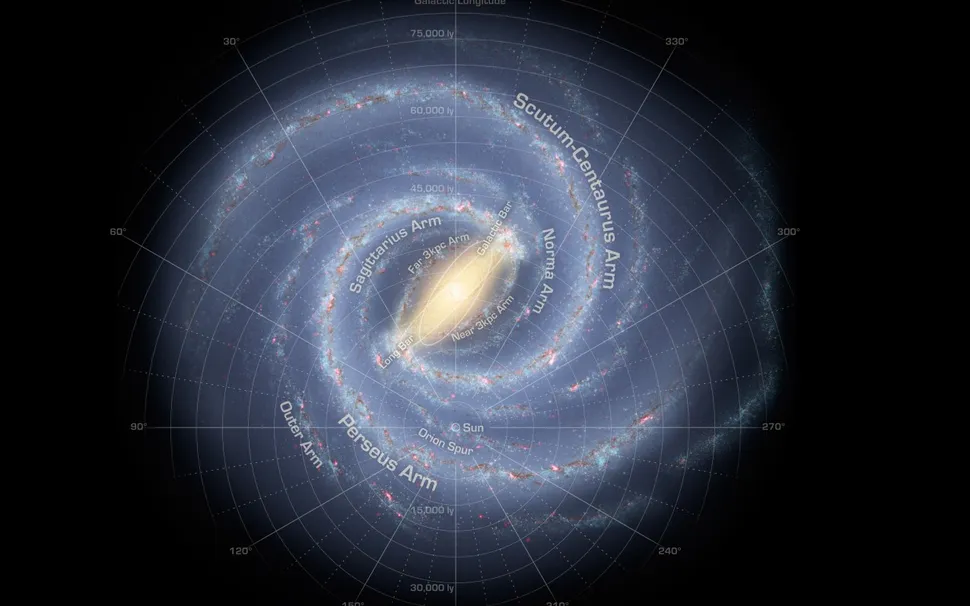Anyone hoping for aliens to contact Earth will have to wait another 400 years at least
Nobody knows for certain what the Nobel Prize-winning physicist Enrico Fermi did or didn’t say at the lunch with colleagues at the Los Alamos National Laboratory in New Mexico that took place in 1950. But as the perhaps apocryphal story has it, Fermi was holding forth on the sheer number of stars in the sky and the sheer number of intelligent civilizations the planets orbiting them might harbor, and puzzling out why we’ve never seen or heard any sign of them.
“Where is everybody?” Fermi is said to have asked.
That question, now known as the Fermi Paradox, has long bedeviled astronomers and other scientists studying exobiology—which explores the possibility of other life in the universe. Now, there may be an answer, according to a new paper published on the preprint site arXiv: The aliens are out there, alright. We just have to give them time to notice us and reach out to us.
The paper, written by Amri Wandel, a senior scientist in astrophysics at the Hebrew University of Jerusalem, does not rely on new findings, but is rather a thoughtful analysis of the size and scale of the universe as we understand it today, the probability that life exists on other worlds, and that those life forms would know we’re here and would show a lick of interest in us.
The analysis begins with some basic numbers: There are an estimated 400 billion stars in the Milky Way and an estimated two trillion galaxies in the universe. According to findings by the Kepler Space Telescope and other ground-based and space-based observatories, virtually every star in the sky is circled by at least one planet, and many, like our sun, by a whole litter of them. That makes for trillions upon trillions of worlds on which life could, in theory at least, have taken hold. So why the Great Silence, as researchers from the SETI (Search for Extraterrestrial Intelligence) Institute, in Mountain Valley, Calif. call it?
For starters, we’ve done a very good job of hiding ourselves here on Earth. As Wandel posits, biotic planets like ours may be exceedingly common in the universe, and intelligent species studying them would not pay a whole lot of attention to just one more green and living world. What they’d be looking for would be a green and living world with other intelligent beings.
The first and most conspicuous sign we have given off that we are just such a species are the radio signals that we transmit to one another but that leak through the atmosphere and stream out into space. It has been only about a century since we began emitting those unintentional beacons. Our so-called radio bubble, which streams out in all directions—north and south, east and west—thus measures just 200 light years in diameter. That’s a flyspeck in a galaxy that measures 100,000 light years across and a universe that is a staggering 94 billion light years.
What’s more, if a civilization were to have received our signal and sent back a response by now, it would have to be located just 50 light years away since, it would take 50 years for our radio beacon, traveling at the speed of light, to have reached it, and another 50 years for the receiver to have sent back a message. That’s a whopping century for just a two-way hello. Not that there aren’t candidates within that small footprint in space. According to Wandel, there are an estimated 2,000 stars, harboring who knows how many planets, within 50 light years of Earth.
So how many of those planets might host life? For this, you have to turn to the Drake Equation, created by astronomer and SETI Institute founder Frank Drake. The equation estimates the number of civilizations in our galaxy capable of receiving and responding to radio signals as a factor of a range of variables, including the rate of the formation of sunlike stars, times the proportion of stars that are orbited by planets, times the proportion of those planets that could support life, times the fraction of those on which life actually does emerge, times the fraction of those life forms that develop intelligence, times the fraction that are intelligent enough to receive and transmit signals, times the length of time such a civilization actually sends those signals before either perishing or going silent for any other reason.
That’s an awful lot of speculative x-factors to fill in, and it’s anybody’s guess—or at least educated estimate—as to what number appears on the right-hand side of the equals sign. For the purpose of the 2,000 planets within 50 light years of Earth, Wandel’s own Drake estimates put the number of worlds harboring extant, intelligent life at between zero and just a few.



Connect with us on our socials: